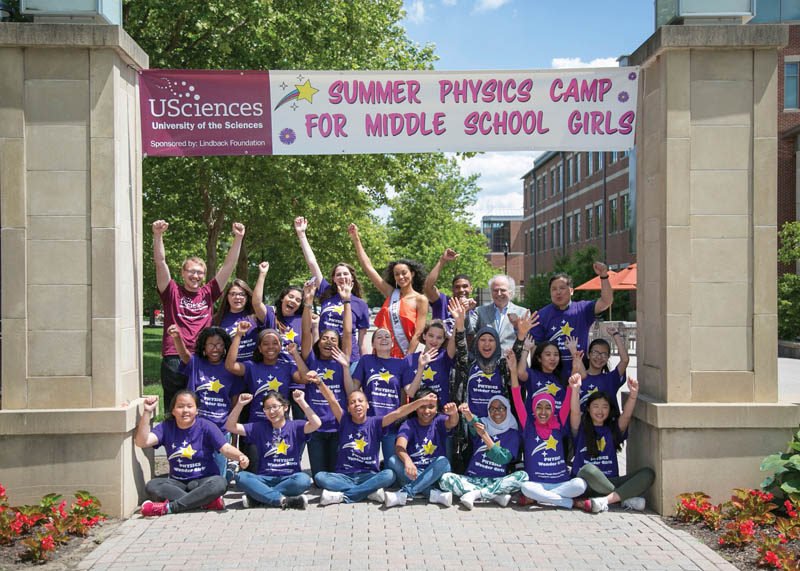A Summer Camp of Wonder
Fall
2017
Interactions - SPS Chapters in Action
A Summer Camp of Wonder
Kendra Redmond, contributing writer

“At a young age, my daughter Kristiana loved science,” says Roberto Ramos, SPS advisor at the University of the Sciences in Philadelphia and the zone councilor for Zone 3. “I promised myself I would try to explain every physics phenomenon in a way a child would understand—minimal jargon, minimal math.”
The approach worked for Kristiana, and Ramos found that it works for older kids too. Inspired by his daughter and motivated by research showing that middle school girls are at high risk of losing interest in science, Ramos took action. He debuted a one-week summer camp for middle school girls in 2013 at his then-institution, Indiana Wesleyan University. Physics Wonder Girls Camp is now in its fifth season and its second summer at University of the Sciences.
The camp is packed with hands-on physics activities, games, conversations with scientists, and lab tours. This year, working in teams of three, girls cut PVC pipes, used power tools, soldered wires, and assembled and decorated submersible, remotely operated vehicles (ROVs) that they used to perform underwater missions. 2017 highlights included career talks by several female scientists, including two physicists, three food scientists, and a nuclear chemist who is also Miss USA 2017.
Middle school girls are nominated to attend the camp by their science teachers and are selected on the basis of science grades, letters of recommendation, and a short essay. There is no charge for them to attend. Only 12 students are accepted into each session, but this year Ramos was able to offer two sessions and serve twice as many students.
Bringing the camp to life each summer is a big undertaking. The first four years were funded by the National Science Foundation, the most recent sessions by the Christian R. and Mary F. Lindback Foundation. The camp is staffed primarily by SPS students. For them, it is a chance to cement their physics subject knowledge and see first-hand the value of science outreach.
SPS member and physics and biology double-major Caitlyn McConnell was a 2017 camp counselor. “Not only did the lessons help me to solidify my own background in physics, but they also showed me that it can be taught to anyone without being convoluted. Everyone has the ability to learn and grow, but not everyone has the right encouragement and opportunities.”
“What surprised me most was how easily [the campers] all opened up to us, the counselors, and made friends with each other,” McConnell says. “Each girl brought a unique perspective on life to the camp, and I learned just as much from them as they did from me.”
The camp culminates in a physics show presented by the campers to their family and friends. “When the camp opens the eyes of kids and parents to physics..., I know we've done a good job,” says Ramos. His favorite quote is from an email sent by a parent. "Participating in this event,” the parent wrote, “has opened new conversations between us about what our daughter's future might be."
--------------
What advice would you give to chapters interested in starting an event like this?
“Connect with organizers of other science camps. Learn from and build on their experiences. Most are willing to share the many lessons they've learned along the way. Think of innovative ideas or research materials that may already be out there that will appeal to the intended audience.” – Roberto Ramos
